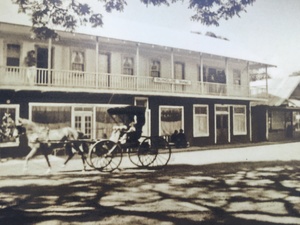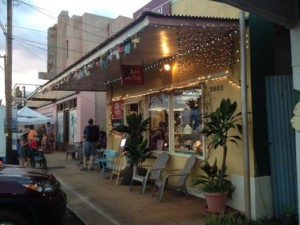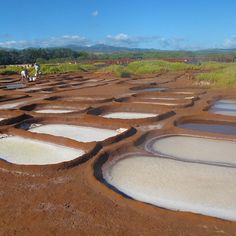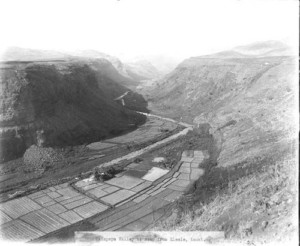This small town’s history is present and relevant today
By Kristen Pedersen
We know Kauai for its incredible natural scenery, dense rainforests, and dramatic ocean cliffs. It has been the location for several Hollywood movies and television series, and is a popular destination for hiking and exploring. But, there is also a slice of history, alive and well, in the small town of Hanapepe, that warrants attention.
Hanapepe, a quiet town on Kauai’s south shore, is off the Kaumualii Highway, about 16 miles southwest of Lihue. With a population of just 2700, there may be as many free-range chickens on the streets as there are human residents. The lush Hanapepe Valley was home to native Hawaiians for centuries before Captain Cook arrived in 1778. Many crops were grown in the area, including banana, sugar cane, taro, and sweet potatoes. By the 1880’s, the sugar industry was flourishing in Hawaii, bringing Chinese, Japanese and Filipino immigrants to the islands. While most stores and towns on Kauai were built by the sugar plantation owners, Hanapepe was largely built by entrepreneurial immigrants. Many workers who retired from the sugar plantations came to Hanapepe to grow taro, rice, or begin small farms or businesses to serve the local community.

Historical Hanapepe. Photo courtesy of Hanapepe.org
In addition to agricultural businesses, the military also played a large role in the history and development of Hanapepe. From World War I to the 1950’s, Hanapepe’s Port Allen was a port of call for the US Navy and, subsequently, became one of the biggest towns on Kauai. The Navy no longer docks at Port Allen, but tour boats come and go on their routes up and down the Na Pali coast. There are several historic buildings still standing in town that were popular with Navy sailors – including the pool hall and the former USO Club.

Galleries & musicians. Photo courtesy of Hanapepe.org
After the Navy left Port Allen and Highway 50 was realigned, Hanapepe experienced an economic decline. Twenty years ago, many of the buildings in downtown Hanapepe were abandoned and in disrepair. Today, due to an influx of artists and small business entrepreneurs, Hanapepe has been reinvented and the old wood-frame buildings are now art studios, stores, and cafes. Throughout Hanapepe there are informational markers that explain the history of the restored buildings – many are over 100 years old – such as the former laundry building that is now an art gallery, and the service station, transformed from its previous incarnation, into a bookstore and café.
One of the most interesting examples of living history in Hanapepe is the salt ponds. Salt was an important commodity in Hawaii’s early post-contact economy. It was traded with visiting ships who needed the salt for food preservation. Salt is still farmed in Hanapepe just as it has been for hundreds of years. Every May, the local families who have stewardship of the ponds begin preparing their ‘pans’ or ponds for the summer salt gathering season. The pa’akai (sea salt) is created by underground saltwater that is transferred to shallow ponds shaped from the ground and lined with clay. The salt farms of Hanapepe are one of only two major areas in the islands where salt is still harvested in the traditional manner.

Salt mines. Photo courtesy of Hanapepe.org

Today, the Hanapepe ponds operate under the concept of communal stewardship – meaning the salt may be given away or used for bartering, but cannot be sold. It is most often used by the families for seasoning food or mixed with ‘alaea (red dirt from Wailua) and used in traditional ceremonies or for medicinal purposes.
Both the creative adaptations of historic architecture by local entrepreneurs and the traditional rituals that infuse the working salt ponds serve as living examples of historic Hanapēpē’s relevance today.
Kristen Pedersen is a professor in Public Communication at Portland State University. Prior to finishing her PhD, she worked in film and television in Miami, Los Angeles, and Brussels, Belgium. She is a U.S. Coast Guard veteran, an avid researcher, and from a kama’aina family.
Source Material
Beyette, B. Hanapepe, Kauai. LA Times. April 18, 2010.
Ho‘okuleana blogspot.com/2012/04/hanapepe-salt-ponds.html
On Walkabout In: Hanapepe, Kauai. Dobbs. April 27, 2014.
Senussi, A.M. Ancient Hawaiian Salt-Making at the Ponds of Hanapepe. Marine Option Program, Kauai Community College, 1982.



